Three-quarters of Gaza marked as IDF evacuation zones, BBC finds
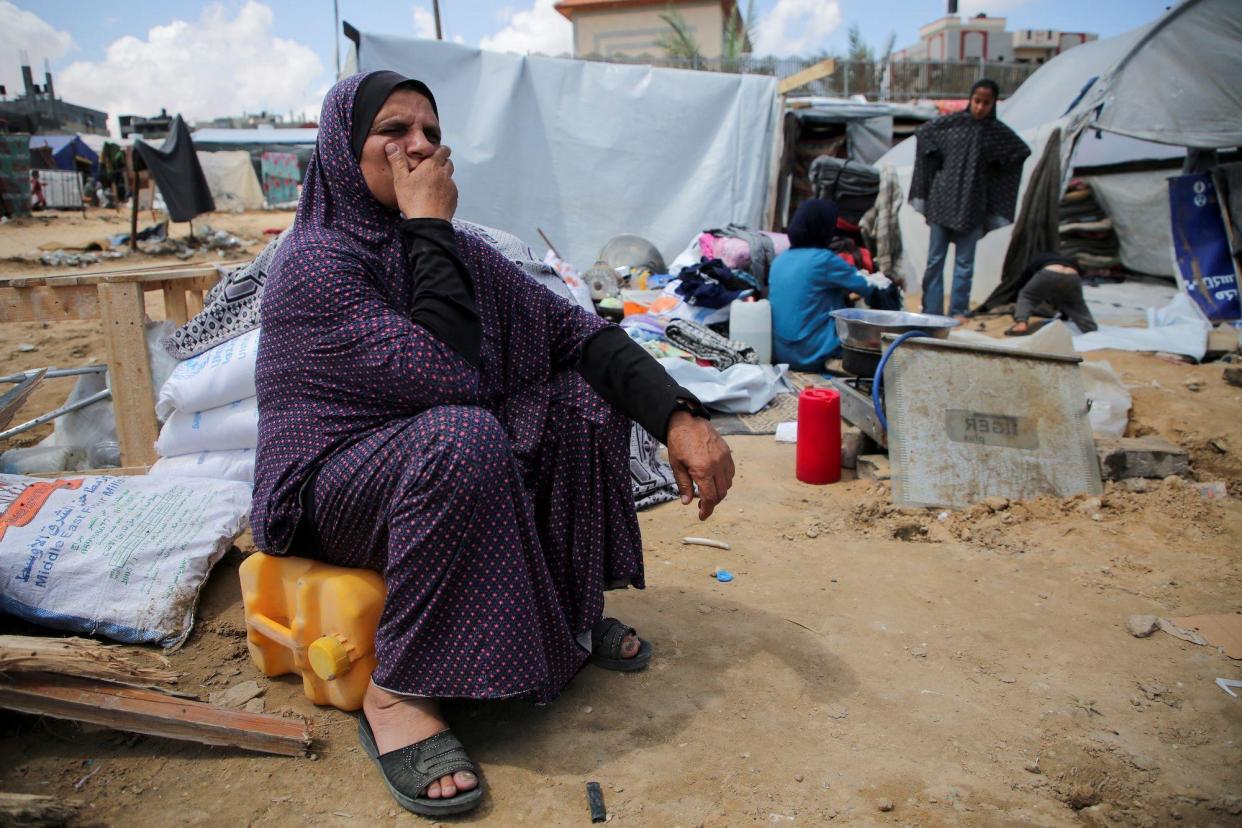
More than three-quarters of Gaza's territory have been designated as evacuation zones by the Israeli military since the war against Hamas began in October, an analysis by BBC Arabic has found.
The Israel Defense Forces (IDF) has issued evacuation orders to Gazans since Israel launched a military campaign on 7 October in response to a cross-border attack that day by Hamas, in which about 1,200 people were killed and 252 people were taken hostage. The Israeli response has killed more than 35,000 people in Gaza so far, according to the Hamas-run health ministry.
The BBC’s analysis shows the cumulative areas designated as evacuation zones amount to 281 sq km (108 sq miles). That is the equivalent of 77% of Gaza's territory.
The IDF has told BBC Arabic that its evacuation instructions are protecting civilians by directing them to safer areas.
The UN and other aid agencies insist that there are no safe areas for Gaza's estimated two million civilians. They have also questioned the suitability of an IDF-designated “humanitarian zone” in the territory.
Since the beginning of the war, the IDF has issued dozens of evacuation warnings affecting various areas of Gaza as part of its military operations against Hamas.
By mid-May, only less than a quarter of Gaza’s territory was not designated as an evacuation zone.
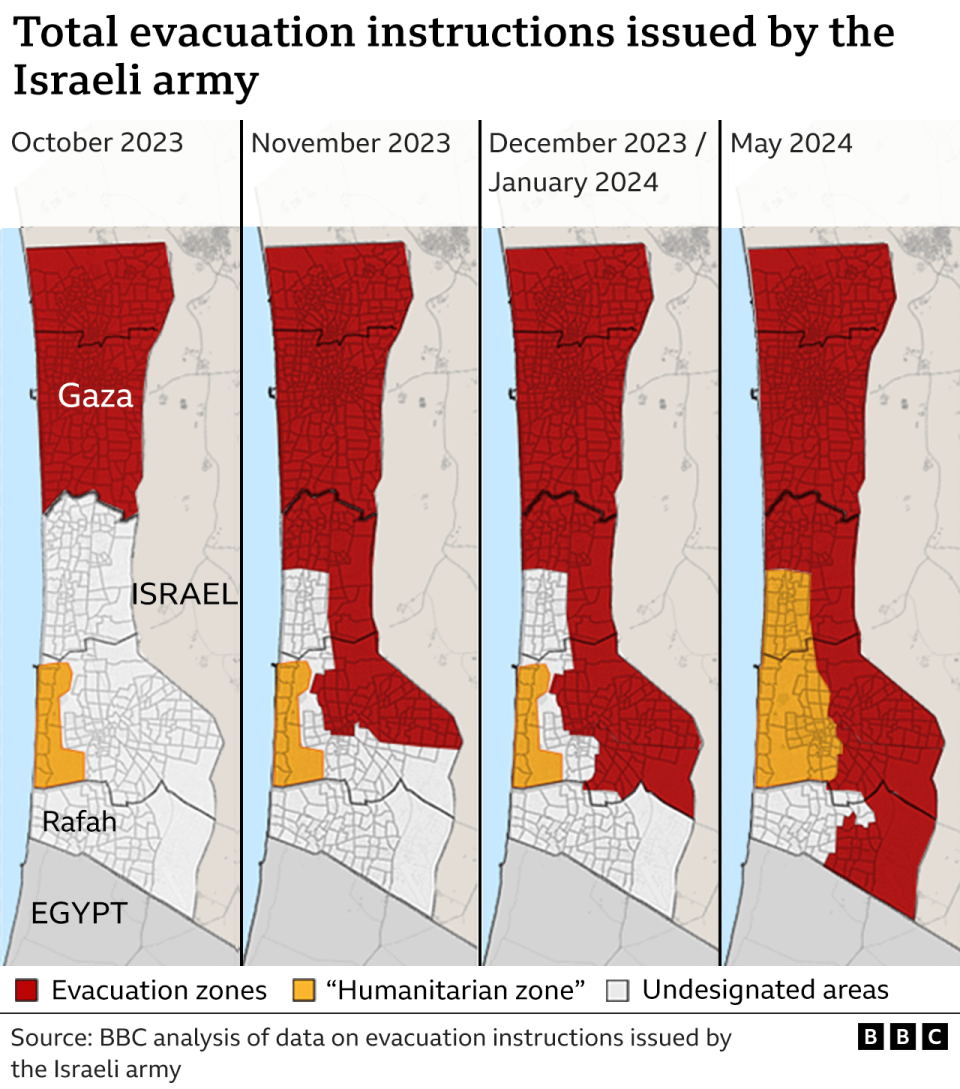
Gaza is a densely populated enclave, around 41km (25 miles) long and 10km wide, bounded by the Mediterranean Sea on one side and fenced off from Israel and Egypt at its borders.
On 7 October, the first day of the conflict, the IDF directed civilians in different parts of Gaza to seek shelter, before it launched its first air strikes.
Later in October, the IDF told civilians in the north, including Gaza City, and central areas to move to south of the Wadi Gaza riverbed.
The IDF announced new evacuation zones in November which included more of central Gaza and parts of the south.
At the start of December, the IDF began issuing evacuation maps where Gaza was divided into blocks to provide more precise instructions, after coming under international pressure.
In December and January, evacuation warnings were expanded further to the south to include the city of Khan Younis and surrounding areas.
In early April, the IDF renewed warnings not to return to the northern parts of Gaza.
In May, almost half of the city of Rafah was added to the evacuation zones, as the IDF ground troops advanced into southern Gaza from the east.
Civilians were simultaneously urged to move to an “expanded humanitarian area” stretching from al-Mawasi, just north of Rafah, to the nearby regions of Khan Younis and Deir al-Balah.
The IDF also recently called for people in and around Jabalia and Beit Lahia in northern Gaza to evacuate to shelters in western Gaza City, as it started fresh operations against Hamas in the two areas.
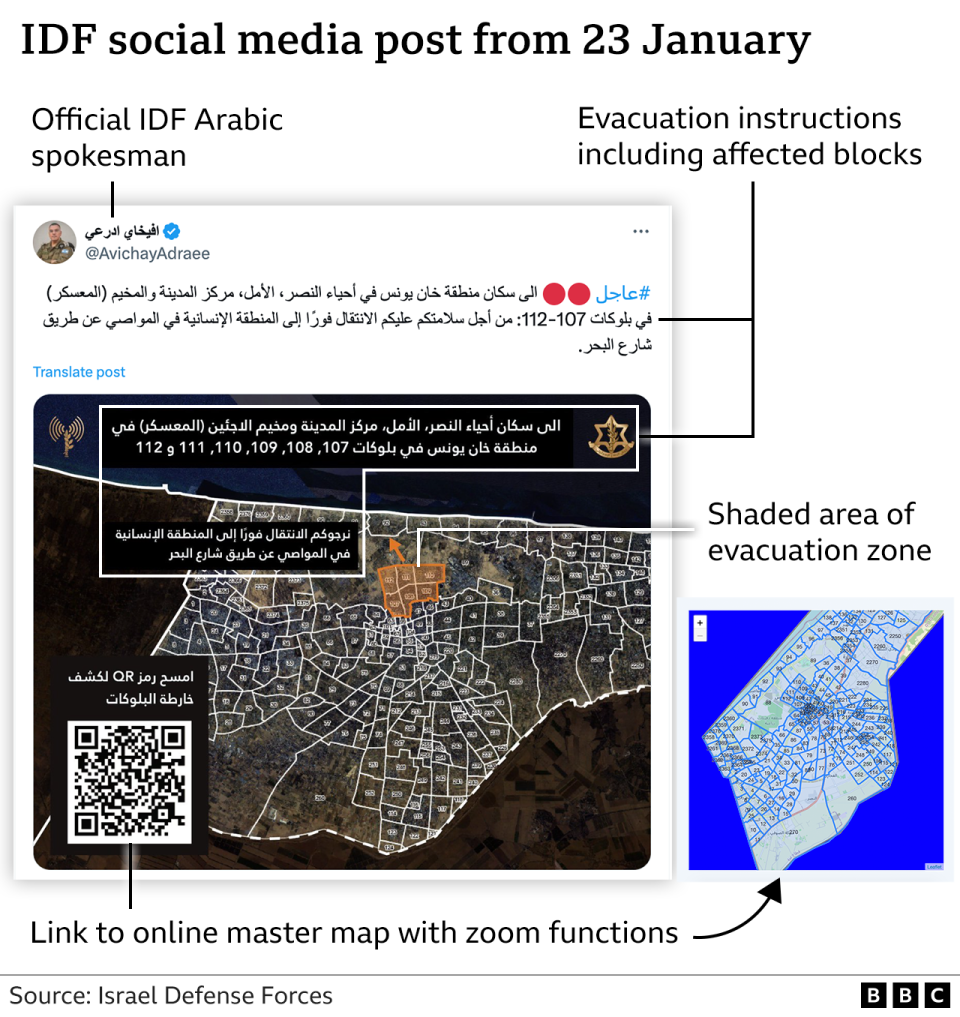
None of the IDF’s evacuation instructions since October have mentioned when evacuation zones will be safe again, or when residents will be able to go back to their homes.
The BBC sought a response from the IDF on the scale of the evacuation zones.
The IDF reiterated that the evacuation warnings were there to protect civilians, but it did not specifically address our findings.
“The IDF is committed to international law and operates accordingly,” a statement sent to the BBC said.
Up to 1.7 million people have been displaced across the Gaza Strip, the majority multiple times, according to the UN's Palestinian refugee agency, Unrwa.
Fleeing Rafah
On 7 May, Israel seized the Gazan side of the Rafah border crossing with Egypt, after IDF troops advanced into the area.
The military ordered civilians to evacuate eastern Rafah for their own safety before launching the offensive.
About 1.5 million displaced civilians had been sheltering in Rafah before then, according to the UN.
Unrwa reported that more than 810,000 Palestinians had fled as of Monday, as Israeli tanks pushed into the city.
In one satellite image captured on 8 May, an area in central Rafah which was once busy with tents for displaced people looked deserted.
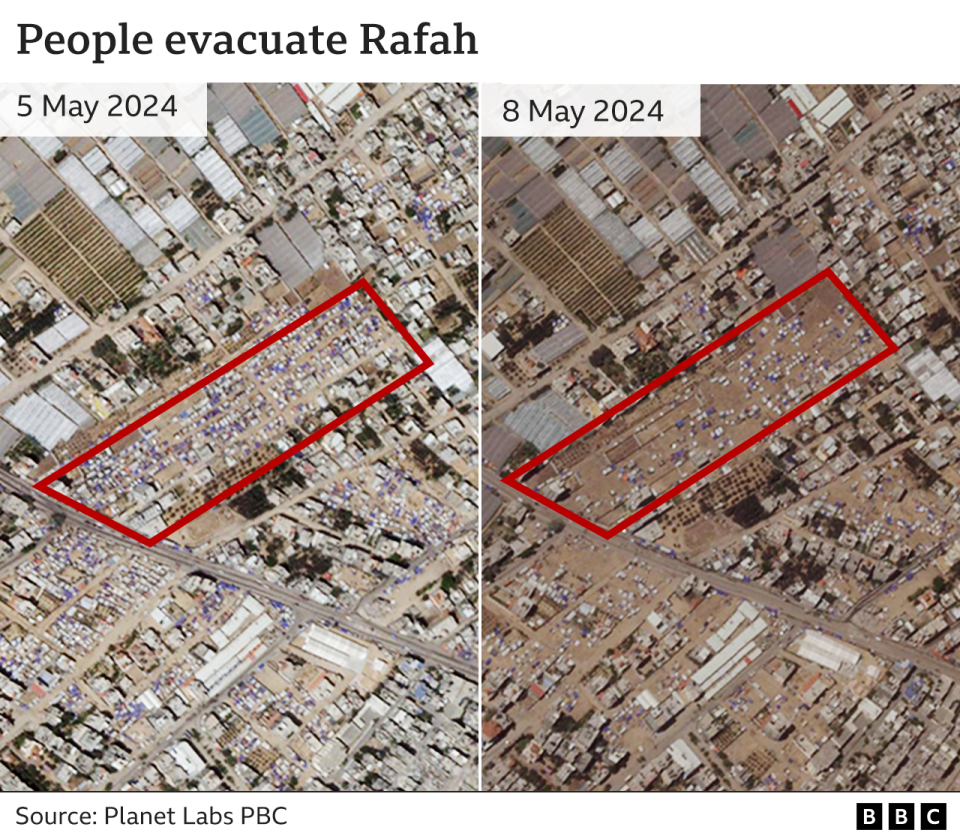
The IDF has been directing civilians towards the “expanded humanitarian area” in al-Mawasi, a narrow coastal strip of agricultural land that was first designated as a “humanitarian zone” in October.
The expanded zone now measures 60 sq km.
The IDF said the area includes “field hospitals, tents and increased amounts of food, water, medication and additional supplies”.
A satellite image captured on 8 May shows what appears to be a new field hospital which has been constructed in Deir al-Balah.
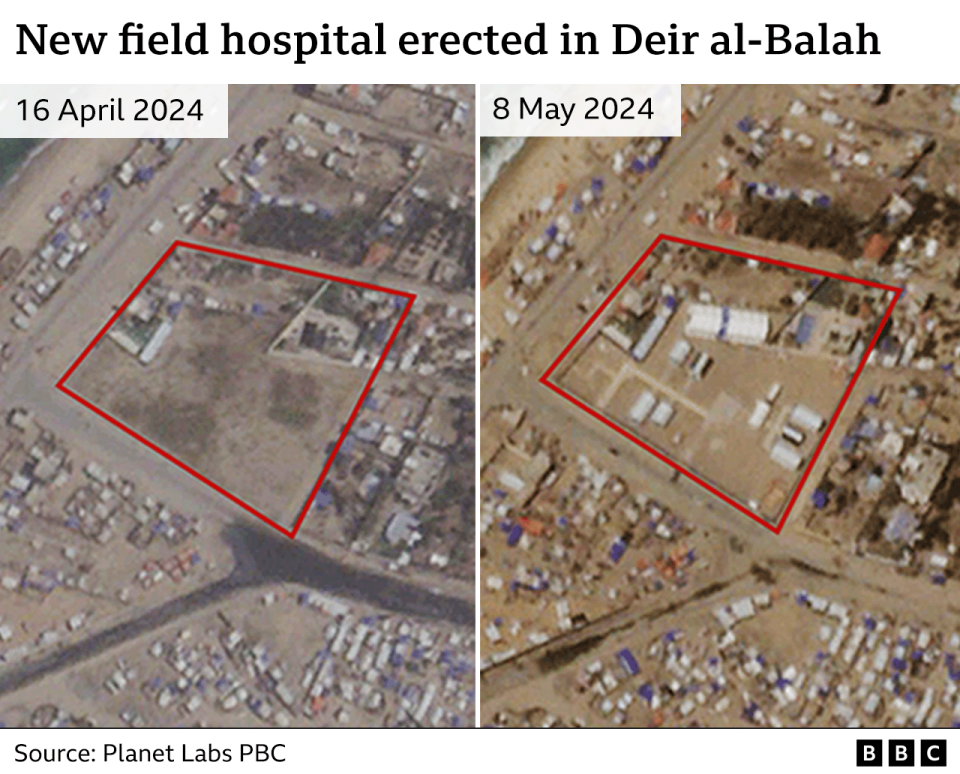
The UN has questioned the idea of directing civilians to al-Mawasi.
“Al-Mawasi, in particular, is an area that is a lot of sand and desert,” Louise Wateridge, communications officer of Unrwa told BBC Arabic.
The IDF’s designated humanitarian areas had limited infrastructure and supplies, she added.
Fidaa Alaraj, a co-ordinator for the charity Oxfam in Gaza, says the humanitarian situation is getting worse in al-Mawasi.
"It is very crowded... Tents are everywhere and are now right on the beach front," she explained.
"There is also not enough food, water and fuel to go around," she added.
Ms Alaraj, a Palestinian from northern Gaza, said she had been displaced several times since the start of the war herself.
BBC Arabic spoke to other Palestinians who had been forced to move several times already.
A displaced woman from Rafah said there was neither water nor electricity when she arrived in al-Mawasi.
Hamdan told BBC Arabic that he had been displaced four times since the conflict began.
"We came to al-Mawasi and could not find tents. And the ones that were available were very expensive. There are no toilets and we had to bury barrels underground to use them as toilets.”
“This is expensive, and life is very difficult. There is no hygiene at all," he added.
Additional reporting by Lamees Altalebi and Paul Cusiac

